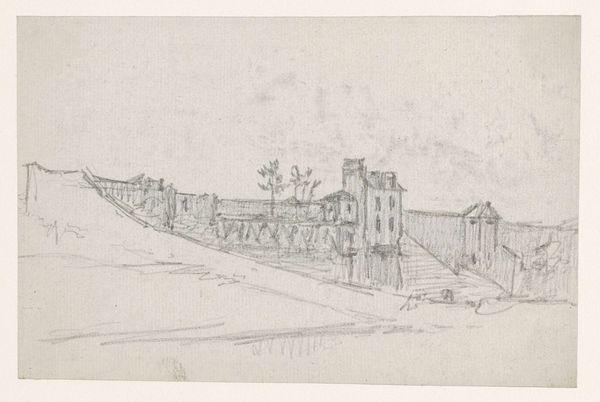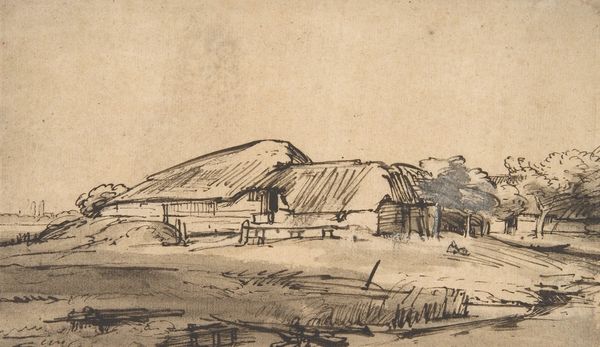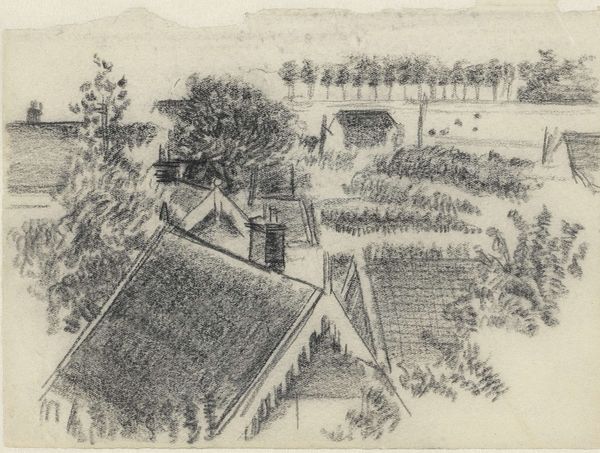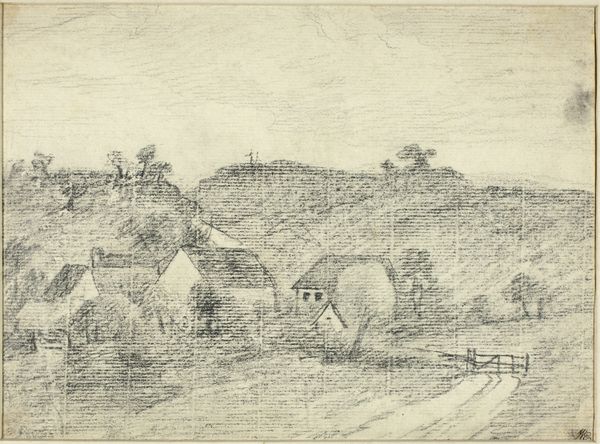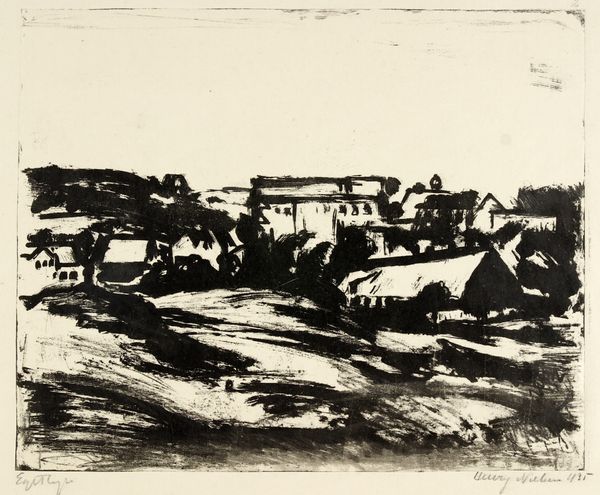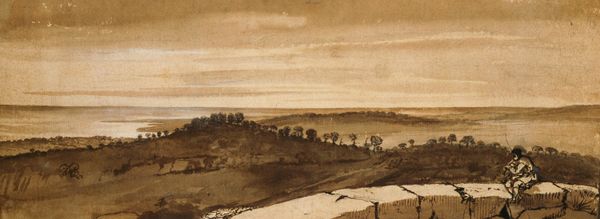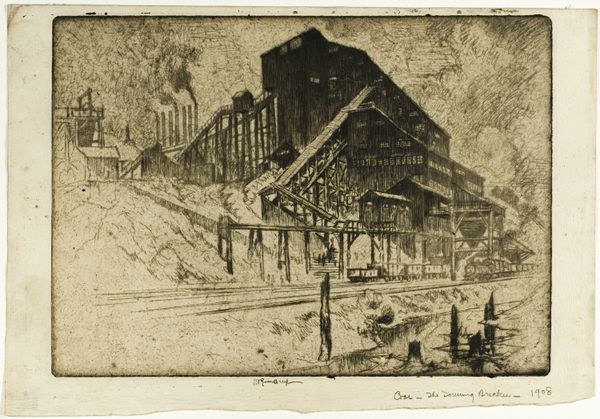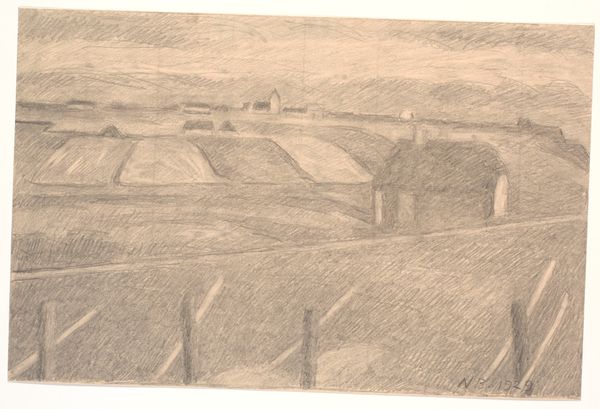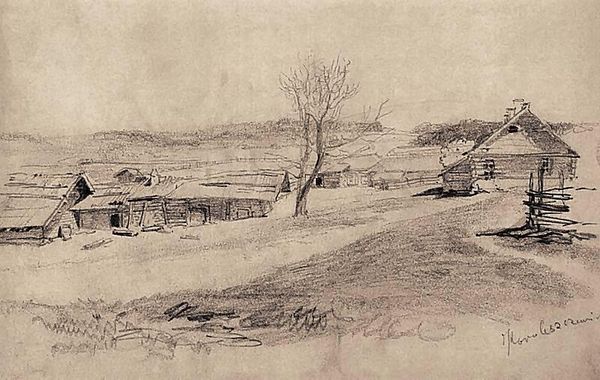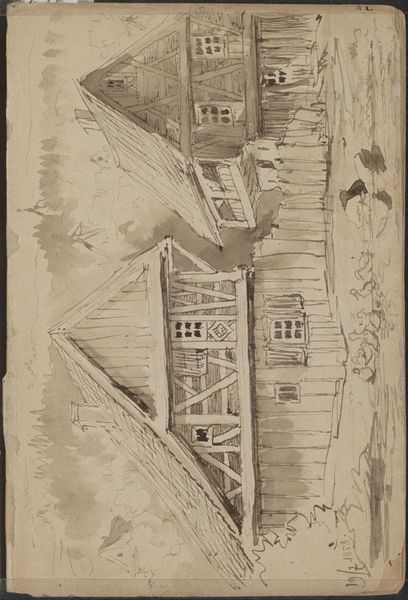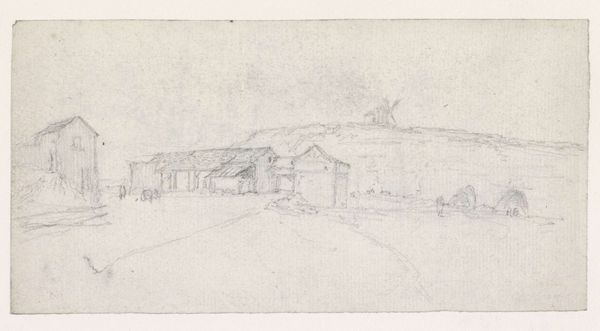
drawing, charcoal, architecture
#
drawing
#
dutch-golden-age
#
landscape
#
charcoal drawing
#
oil painting
#
coloured pencil
#
charcoal
#
architecture
#
realism
Copyright: Public domain
Curator: Immediately striking, isn't it? There's a certain starkness. Editor: Indeed. Let's contextualize this drawing a bit. This is Van Gogh's "View of Scheveningen," created in 1882. We see a view of the Dutch coastal town rendered primarily in charcoal. Curator: The materials here speak volumes, don't they? Charcoal, a humble material, quickly and relatively cheaply accessible. This aligns with Van Gogh’s early artistic concerns and the market forces at play in creating accessible art for a broader audience. The paper itself seems rather basic, indicative of practical limitations perhaps? Editor: Absolutely. And beyond mere material availability, we need to examine Scheveningen itself. This was a working-class fishing community. What does it tell us about Van Gogh's social conscience, about his gaze as an artist choosing to represent this particular locale and its inhabitants, those two figures in the foreground? Their social standing in stark contrast to the affluent cityscapes favored by many artists of the era. Curator: Right, the labor of fishing is almost palpable here, even if indirectly shown through the buildings and the sparse rendering of human figures. These buildings are not grand or luxurious; they speak of functionality, of the bare minimum required for shelter. I'm wondering how the drawing itself relates to Van Gogh’s understanding of labor...it feels rapidly executed, perhaps reflecting the demanding nature of work in Scheveningen. Editor: A good point, and let’s also consider class. Van Gogh himself came from a privileged background and his depictions of working-class life should be analyzed through that lens. Are these portraits imbued with empathy, or is there an element of romanticized exoticism? Are we viewing this town, these people, through a sanitized gaze that is perhaps uncomfortably objectifying? Curator: It certainly prompts one to consider the potential contradictions embedded in the artist’s socio-economic position and his choice of subject matter. Looking closely at his charcoal strokes, it's interesting how he models the form of the architecture. It seems like such an intentional use of limited means to conjure a realistic impression, which could imply a critical awareness of production value and the consumer. Editor: Thinking critically about representation encourages us to dismantle established art hierarchies and acknowledge the complicated and problematic perspectives behind art-making. The context illuminates our understanding but shouldn’t preclude space for constant reevaluation and deeper questions regarding historical injustices. Curator: I agree; this artwork makes a powerful reminder that artistic creation is embedded within very real systems of material conditions and class differences. Editor: Precisely. Hopefully, through a critical analysis, this drawing reveals more than just a view; it mirrors the complexities inherent in any artistic depiction of a specific time, people and place.
Comments
No comments
Be the first to comment and join the conversation on the ultimate creative platform.
